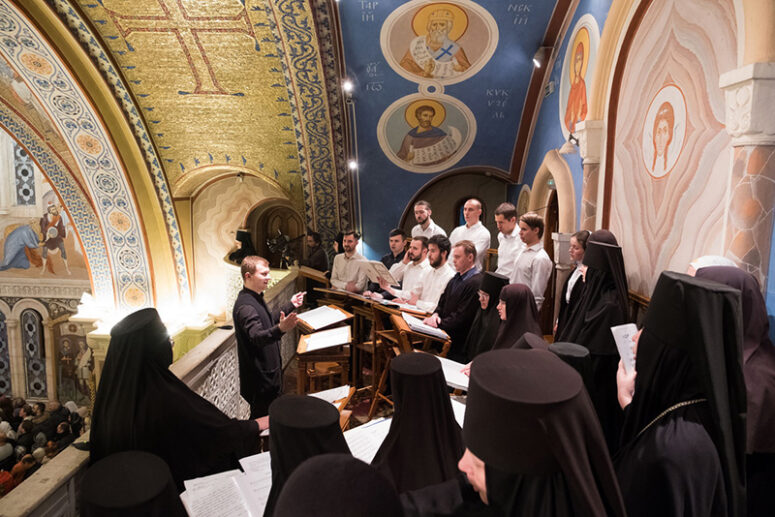
Many in the West have met Christmas and are well into Christmastide. For the faithful of the Russian Orthodox Church, Christmas is just around the corner. We hear its approach in the chants sung at our churches. As the Feat of the Nativity is coming nearer, we hear more of the Christmas Stichera, Triparia and Irmoses. What do they say? In this piece, we take a close look at the seven best-known chants of the Nativity and their message to us.
“Christ is born — glorify Him.”
Christ is born, glorify Him!
Christ comes from heaven, go to meet Him! Christ is on earth, be exalted!
Sing to the Lord, all the earth,
and praise Him in gladness, O people,
for He has been glorified!
This prominent Irmos is a part of the opening chant of the Christmas canon that brings us to the atmosphere of the feast and gives us a foretaste of its joy days before it comes. We begin to hear it at Church as early as one month before the great feast. It is sung for the first time at the all-night vigil on the feast of the Entry of the Most Holy Theotokos into the Temple. They are also performed as Katavasias in the evening of the Saturdays preceding commemoration of the most venerated saints. A Katavasia is a distinct type of Irmos completing every eighth ode of a canon.
The length of the period of preparation sets the Nativity of Christ apart from all the other great holidays and underlines its special significance. As Protopresbyter Alexander Schmemann observes, Nativity begins the coming together of God and the world, and of Christ and man. It is the feast of the basic Christian truth about the incarnation of Christ and the deification of man.
The writer of this Irmos was Saint Cosmas of Maiuma, a hymnographer. He was inspired by the Homily of Saint Gregory the Theologian, and most notably by these lines, “Christ is born – Glorify Him! Christ from heaven, go out to meet Him. Christ on earth; be exalted. Sing unto the Lord all the whole earth; and that I may join both in one word, Let the heavens rejoice, and let the earth be glad, for Him Who is of heaven and then of earth. Christ in the flesh, rejoice with trembling and with joy; with trembling because of your sins, with joy because of your hope.”
Prepare, O Bethlehem, for Eden has been opened to all!
Prepare, O Bethlehem, for Eden has been opened to all! / Adorn yourself, O Ephratha, for the tree of life blossoms forth from the Virgin in the cave! / Her womb is a spiritual paradise planted with the Divine Fruit: / If we eat of it, we shall live forever and not die like Adam. / Christ comes to restore the image which He made in the beginning!
This Troparion is of the forefeast of the Nativity of Christ, sung from 2 to 5 January (20 – 23 December, old style). With its bright images and instructive allusions to the narrations from the book of Genesis about the life of the first people in Eden, it brings home to us the basic message of the feast of the Nativity. It compares Bethlehem to Eden, the Garden of God that He had planted in the East and where He put the man He had formed (Genesis 2:8). The Christ born of the Virgin is compared to the tree of life by the fruit of which the first people could live forever. This narration is more than a creative metaphor. Many church fathers – of whom John Damascene was one – also used this comparison, underlining that by eating from the tree of life, people were keeping God in their sight. When Adam and Eve sinned, they lost their ability to see God and became mortal. With His coming, Christ returned to us this ability and returned us to eternal life.
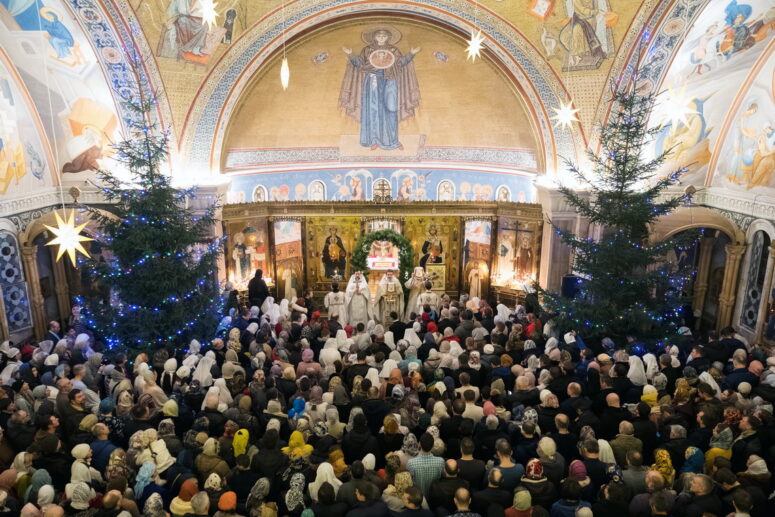
We worship Your Birth, O Christ!
Today He Who holds the whole creation in His hand is born of a Virgin.
He Whose essence none can touch is bound in swaddling-clothes as a mortal Man.
God, Who in the beginning fashioned the heavens, lies in a manger.
He who rained manna on His people in the wilderness is fed on milk from His mother’s breast.
The Bridegroom of the Church summons the wise men;
the Son of the Virgin accepts their gifts.
We worship Thy birth, O Christ.
We worship Thy birth, O Christ.
We worship Thy birth, O Christ.
Show us also Thy Holy Theophany!
This Sticheron is sung on the eve of the Nativity after the Royal Hours, when, in the reading of the Ninth Hour, we recall His suffering and death on the Cross.
This text helps us make sense of the Nativity of Christ, a mystery of God and a challenge to comprehend. The eternal and all-powerful God and Creator of the Universe came into this world as a defenceless infant, dependant on people for all his vital needs.
The Sticheron also draws a clear connection between Theophany and the Nativity, two feasts that were celebrated as one in the ancient Church.
Also noteworthy is the allusion to the hymn sung on the Great Friday, “We worship Your Passion, О Christ: Show us also Your glorious Resurrection!” The order of the services on the eves of the Nativity and the Theophany is modelled on the service of the Great Friday. The Royal Hours are followed by the Typica in lieu of the Divine Liturgy. The similar sequencing of the services on these two feasts underline the interconnectedness of the Nativity of Christ and His death on the Cross and the indivisible link between these two events. The immortal Son of God came into this world to die as a human and redeem the sins of the people.
What shall we offer You, O Christ?
What shall we offer Thee, O Christ,
Who for our sakes hast appeared on earth as a man?
Every creature made by Thee offers Thee thanks:
the Angels offer a hymn; the heavens, a star;
the Wise Men, gifts; the shepherds, their wonder;
the earth, its cave; the wilderness, a manger,
and we offer Thee a Virgin Mother!
O Pre-eternal God, have mercy on us!
This hymn is one of the opening Stichera of the vespers of the eve of the Nativity. It adds a key emphasis to the rest of the service, Notably, that people are called to respond to the gifts that God bestows on them. His ultimate gift to us is the coming to the world of our Saviour Who redeemed the sins of mankind with His suffering and death on the Cross and gave us eternal life.
How shall we do in return? Saint John of Shanghai and San-Francisco gave this answer in one of his sermons. “O man! He has shown you, O mortal, what is good. And what does the LORD require of you? To act justly and to love mercy and to walk humbly with your God (Micah 6:8). To the Lord lying in the Manger, we offer our worship and praise and also some good deed.”
Also in this Sticheron, we find a beautiful description of the Mother of God. The Most Holy Virgin, exceeding in greatness all the powers of the angels, is the gift from all of mankind to the Lord, the best it could offer.
Glory to God in the highest, and on earth be peace!
Glory to God in the highest, and on earth peace! Today Bethlehem receives Him Who reigns forever with the Father. Today Angels glorify the newborn Babe in hymns worthy of God: “Glory to God in the highest, // and on earth, peace, goodwill to men!”
This Nativity Sticheron repeats the lines of the evangelical song from the Gospel of Luke (2: 13-14). We hear it at the all-night vigil of the feast of the Nativity of Christ. It follows the Gospel readings with the narrative of the Angel’s disclosure to the Righteous Joseph that Mary who was pledged to be married to him was pregnant through the Holy Spirit and would give birth to Christ, the Saviour of all people.
Its solemn text shows us the connectedness between the Nativity as a historical event that happened at a particular time and place and its universal significance for all people, of all generations.
It also proclaims a unity of three levels of existence -the world of heaven, where our Triunite God dwells in eternity, the world of the Angels, and the human world on earth. These worlds were separate when he came, but the Nativity of Christ restored their connectedness.
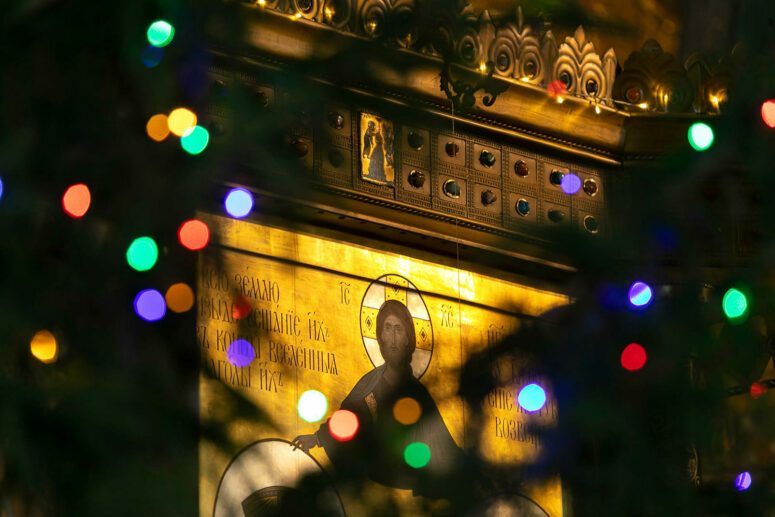
Troparion to the Nativity of Christ
Thy Nativity, O Christ our God,
has shone to the world the light of wisdom!
For by it, those who worshipped the stars,
were taught by a star to adore Thee,
the Sun of Righteousness,
and to know Thee, the Orient from on high.
O Lord, glory to Thee.
It is common to contrast faith with rational knowledge. This fourth-century Troparion puts forth the same idea that was advocated by Christian apologists of the first centuries, namely, that faith and reason are inextricably linked. Augustine Aurelius expressed the same proposition in his fifth-century maxim: “Understand to believe, and believe to understand.” The Troparion speaks of the Magi, the worshippers of stars, who were taught by the star of Bethlehem to adore the Star of Righteousness, the true God. Aware that the Magi knew the prophecies about the soon-to-come birth of the Great King and believed in the omens from the stars, the Lord brought them to the Lord Jesus Christ who would say to them, “I am the way and the truth and the life.” He would declare that the reason He was born and came into the world is to testify to the truth.
This Troparion refers to Christ as the sun, and it is not coincidental. When the feast of the Nativity was beginning to be observed separately from the Theophany, there was still a Pagan tradition in Rome to celebrate the feast of the invincible god of the sun on the day of the winter equinox. Perhaps by celebrating the Nativity at approximately the same time, the early Christians were drawing the attention of the Pagan people from the adoration of a celestial body, the Sin, to the worship of Christ, the spiritual Sun that never sets.
Kontakion to the Nativity of Christ
Today the Virgin gives birth to the Transcendent One, / and the earth offers a cave to the Unapproachable One. / Angels with shepherds glorify Him; / The wise men journey with a star, / Since for our sake the Eternal God was born as a Little Child!
This Troparion is another well-known hymn of the Nativity written in the 5th to 6th centuries by Saint Romanos the Melodist. In its text, we encounter a characteristic question, How could God, too big for the Universe, be born from the womb of the virgin? Or find shelter in a modest cave?
But the text in its familiar form represents less than a tenth of the original hymn. Roman the Melodist had a preference for long works. The text that we know as the Kontakion of the Nativity was merely an introduction to another 24 verses whose initial letters made the acrostic Τοῦ ταπεινοῦ Ῥομανοῦ ὁ ὕμνος («Hymn of the Humble Romanos»).
Prepared by Anastasia Parkhomchik
Source: foma.ru

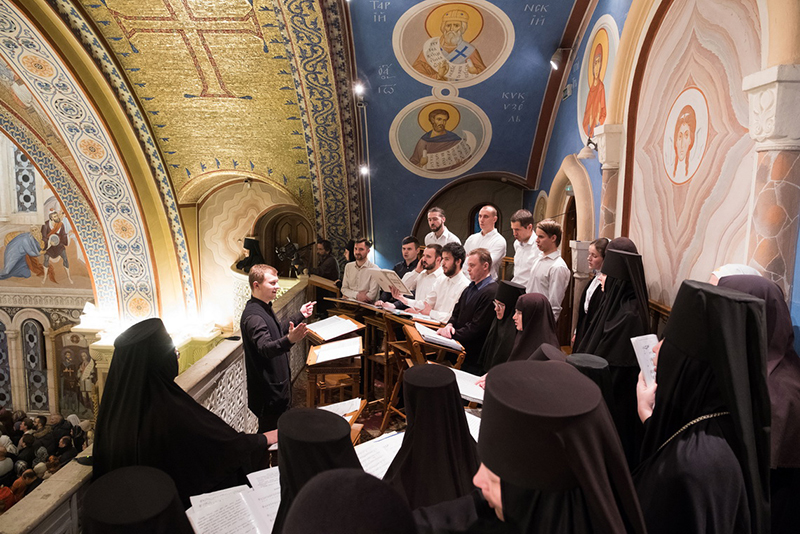
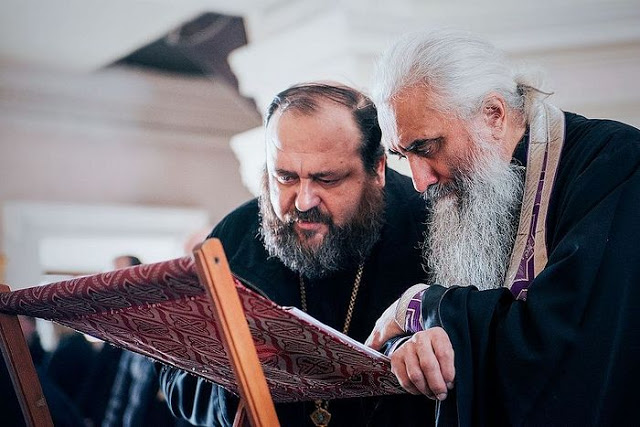
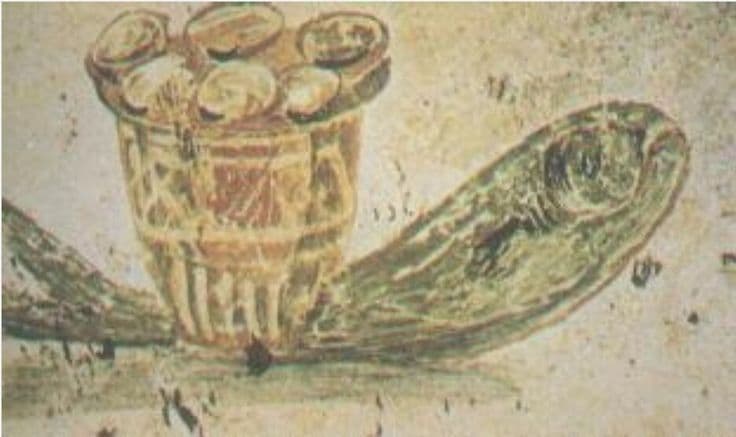

Absolutely wonderful! Thank you so much for bringing these Nativity hymns alive.